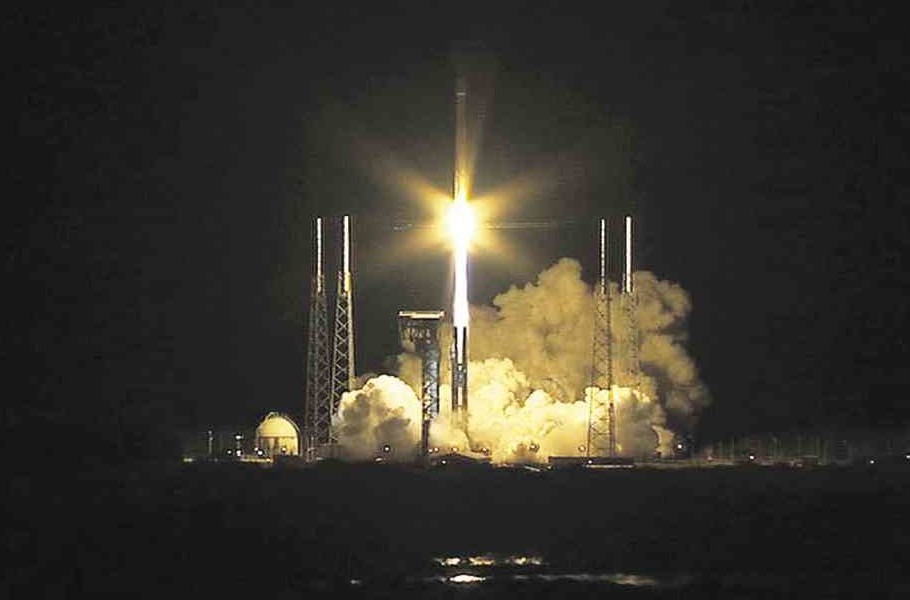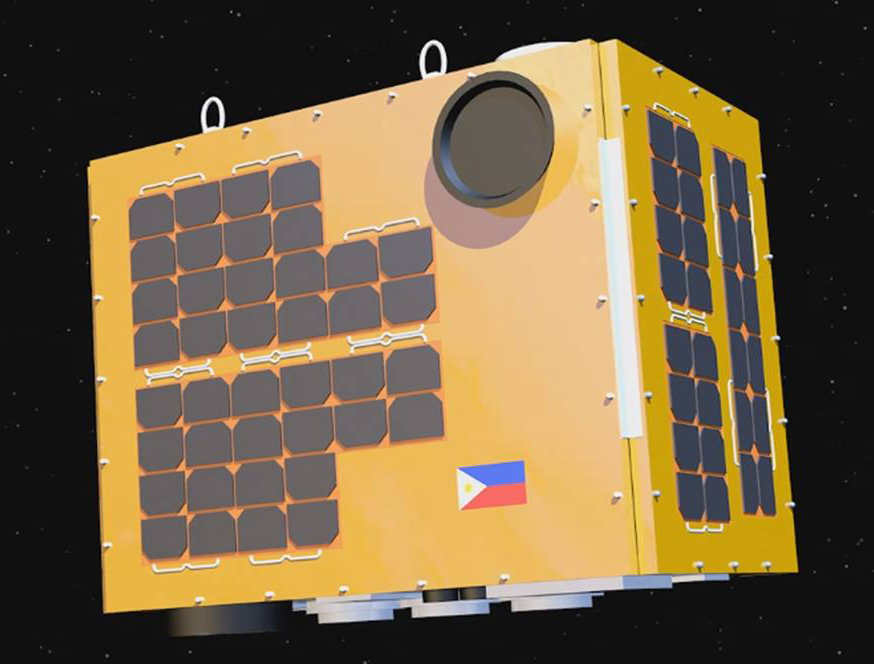Diwata-1 journey into space a historic feat for PH–Cuisia

TO SPACE TECH AND BEYOND! The Atlas V space vehicle lifts off from Cape Canaveral in Florida on Wednesday, with Diwata-1, the Philippine microsatellite, on board. AFP/NASA
The first Filipino-made and co-developed microsatellite, aptly called Diwata-1, began its “momentous” journey into outer space on Wednesday morning, marking the start of the country’s venture into space technology.
Diwata-1 was included in the 3,375-kilogram cargo of food, crew supplies, vehicle hardware and 20 nanosatellites on board Orbital ATK’s Cygnus spacecraft that took off at exactly 11:06 a.m. (Manila time) from Cape Canaveral Air Force Station in Florida.
The Cygnus spacecraft—nicknamed SS Rick Husband in honor of the shuttle commander who died in the 2003 Space Shuttle Columbia accident—was propelled into space as part of the fifth resupply mission to the International Space Station (ISS).
The spacecraft was expected to dock at the ISS on Saturday evening (Manila time), where it would release its cargo, including Diwata-1, into orbit as early as April 20.
Once Diwata-1 goes into orbit, it will stay in space for around 20 months at 400 kilometers from earth, during which time the microsatellite will use its four specialized cameras to take an average of 3,600 high-resolution images of the country that will be used for imaging its land and water resources, and for studying changing weather patterns, agricultural productivity, as well as disaster response and mitigation.
Space technology
“All this time we’ve been looking at other countries venturing into space, celebrating with them even though we have no part in it. We may not have launched the rocket, but now a piece of equipment there belongs to us,” declared Carlos Primo David, executive director of the Philippine Council for Industry, Energy and Emerging Technology Research and Development.
David told reporters yesterday that the successful launch into space of Diwata-1, officially named the Philippine Earth Observation Microsatellite (Phil-Microsat), was the “first step (in) the challenge (of) venturing into space and developing our own space technology.”
Control of the microsatellite will be transferred sometime in May to the Philippine Earth Data Resources Observation (Pedro) in Subic, Zambales province, he added.
Among the government agencies expected to benefit the most from Diwata-1’s data are the Department of Environment and Natural Resources, Philippine Atmospheric, Geophysical and Astronomical Services Administration, Department of Agriculture and even the Department of Tourism.
The launch, viewed via live feed at the University of the Philippines’ Electrical and Electronics Engineering Institute in Diliman, Quezon City, was welcomed with applause and shouts of excitement among officials and staff of the university and the Department of Science and Technology (DOST).
In Japan, Filipino scientists and engineers who developed Diwata-1 nervously watched in silence as the spacecraft carrying the microsatellite they had worked on for a year left the earth’s atmosphere. Watching the live feed of the launch at Tohoku University and Hokkaido University were Ariston Gonzales, Juan Paolo Espiritu, Benjamin Magallon Gerwin Guba, John Leur Labrador, Julian Marvick Oliveros, Kaye Kristine Vergel, Delburg Mitchao and Harold Paler.
The group of Filipino scientists and engineers in the two universities in Japan is now developing Diwata-2, a successor to the first microsatellite, which was expected to be launched into space by April 2017.
Gay Jane Perez, one of Phil-Microsat’s project leaders, said the second microsatellite will be deployed at a higher altitude of 500 kilometers from Earth, a distance that would give Diwata-2 a longer life span of around five years.
UP Diliman Chancellor Michael Tan said the microsatellites launched into space will further develop the country’s knowledge base and “massively improve the data we (get), in areas such as climate and topography.”
Unmanned aerial vehicles
Apart from the microsatellites, which are part of a three-year P840.82-million program seen to lay the foundation for a possible Philippine Space Agency, David said a program on unmanned aerial vehicles (UAVs) that will be used “for military research” was also being started, with a memorandum of agreement signed with the Department of National Defense “before the end of the Aquino administration.”
In a statement, Philippine Ambassador to the United States Jose L. Cuisia on Wednesday hailed the launch of Diwata-1, as it could “provide policymakers in the country with scientific data and information needed to formulate policies relating to disaster mitigation, agricultural productivity and management of land and water resources.”
Orbital ATK’s Cygnus capsule holds 8,000 pounds of food, equipment and scientific research for the National Aeronautics and Space Administration (Nasa), including a commercial-quality 3-D printer, as well as experimental robotic grippers modeled after thousands of sticky hairs on geckos’ feet. The technology could one day be used on the hands and feet of robots that would move along the exterior of spacecraft to carry out inspections and repairs.
Fire experiment
There’s also a fire experiment that will remain on the Cygnus, as researchers plan to ignite a large-scale blaze in a contained box, to see how it spreads in weightlessness. The fire will not be set until the Cygnus departs the space station in May, full of trash for a destructive reentry.
Named after the swan constellation, the Cygnus is one of two commercial vehicles used to stock the 250-mile-high space station. Both haulers have lost shipments to rocket failures over the past one and a half years and are still working to catch up. A Russian shipment also ended up destroyed.
Nasa contracted out space station cargo deliveries—and beginning as early as next year, crew taxi flights—to concentrate on getting humans to Mars in the 2030s. Earlier this month, US astronaut Scott Kelly returned from a yearlong stay at the station, helping to push that goal forward. With reports from AFP and AP
